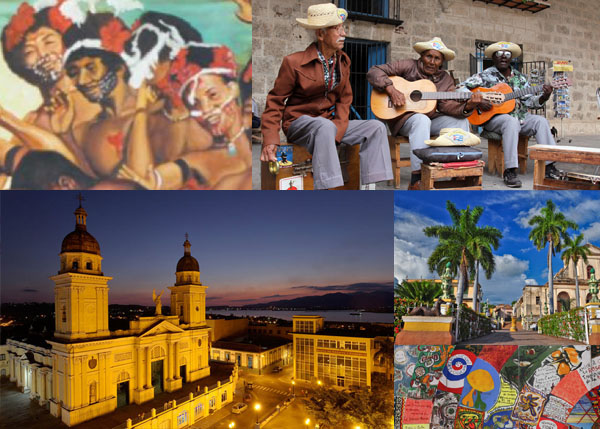10.6.3 Duo The Martí sisters.

Berta and Amelia Martí were born in Havana, in the municipality now known as Marianao. Their father was a prominent lawyer who loved to sing and accompany himself on the guitar. The family instilled in them a love of music. As teenagers, they lived in the town of Remedios, located in the central part of the island. In Remedios, they had the opportunity to attend an Alejandro García Caturla concert.
It was thanks to an uncle who encouraged them to pursue music that they eventually studied at Havana’s Municipal Academy of Music. Amelia studied classical guitar and won awards for her performance of “Choros” by Brazilian composer Héctor Villa-Lobos.
The Martí sisters debuted performing a composition by Manuel Corona entitled “Hijo Mío” in August 1938 on the famous radio program La Corte Suprema del Arte. There they also performed “Como arrullo de Palmas” (A Lullaby of Palms), a song that would eventually become the duo’s signature piece. Their repertoire was impressive, encompassing everything, including pieces such as “No te rías” (Don’t Laugh); “La Palma” (The Palm); “Remember, My Brunette”; “Mares y Arenas” (Seas and Sands); “No quiero olvidarte” (I Wouldn’t Want to Forget You); “Morir a Loving” (Die Loving); “Una mirada” (A Look); “La Alfonsa” (The Cherry); “La Guinda” (The Idyll); “Canto de un Jilguero” (Song of a Goldfinch); and “Veinte años” (Twenty Years). The Martí sisters masterfully performed hundreds of works from the traditional Cuban and Latin American songbook, with extreme fidelity and good taste.
They performed works by composers Eliseo Grenet and Gonzalo Roig, among the classics; and among the composers and troubadours, Orlando de la Rosa, Isolina Carillo, Tania Castellanos, Carlos Puebla, and Martha Valdés.
The Martí sisters charged five pesos for their performances, so they also worked in sewing and fashion.
With the song “Clave a Martí,” they had a dispute with a Minister of Education in the province of Cienfuegos, who stated that it was an anti-government song and claimed that it would prevent children from learning it.
Some critics considered them to be too “classical,” at a time when most composers worked from memory and only Villalón was capable of writing his own scores.
The duo Las Hermanas Martí became one of Cuba’s finest. They performed frequently at the América Theater (253 Avenida de Italia, Centro Habana, Havana City) and also on Radio Cine. They recorded five LPs, and the radio stations’ archives retain their voices on magnetic tapes. For more than five decades, they performed on radio, television, and on various stages.
The Martí Sisters Duo is an indisputable artistic treasure of Cuban musical culture.








